Lymphatic Massage after Plastic Surgery. Worth It?
Summary:
- Lymphatic massage is extremely effective in plastic surgery recovery
- Patients can expect up to 50% quicker recovery
- The procedure cleanses your lymphatic system and reduces swelling
Despite the fancy name, lymphatic massage is still, in essence, a massage.
Otherwise known as manual lymphatic drainage, the procedure does not require any special equipment—besides a table to lie on, and a towel to cover yourself with.
You can even do the massage yourself, although it can get labor intensive (and of little effect.)
But why should you bother? What happens after lymphatic massage?
Unlike your regular massage, which is designed to relax your muscles and soothe your nervous system, a lymphatic massage is all about cleaning your skin from all the bad stuff that gets stuck in it.
For most people, it’s the ultimate skin detox procedure.
Slow, methodical movements of the masseur glide over your body, shepherding the harmful toxins towards their “exit points”—often, the armpits—where they leave your body for good in the form of sweat or urine. It is truly fascinating how efficiently it can cleanse your skin.
For plastic surgery patients, though, there are a couple of additional perks.
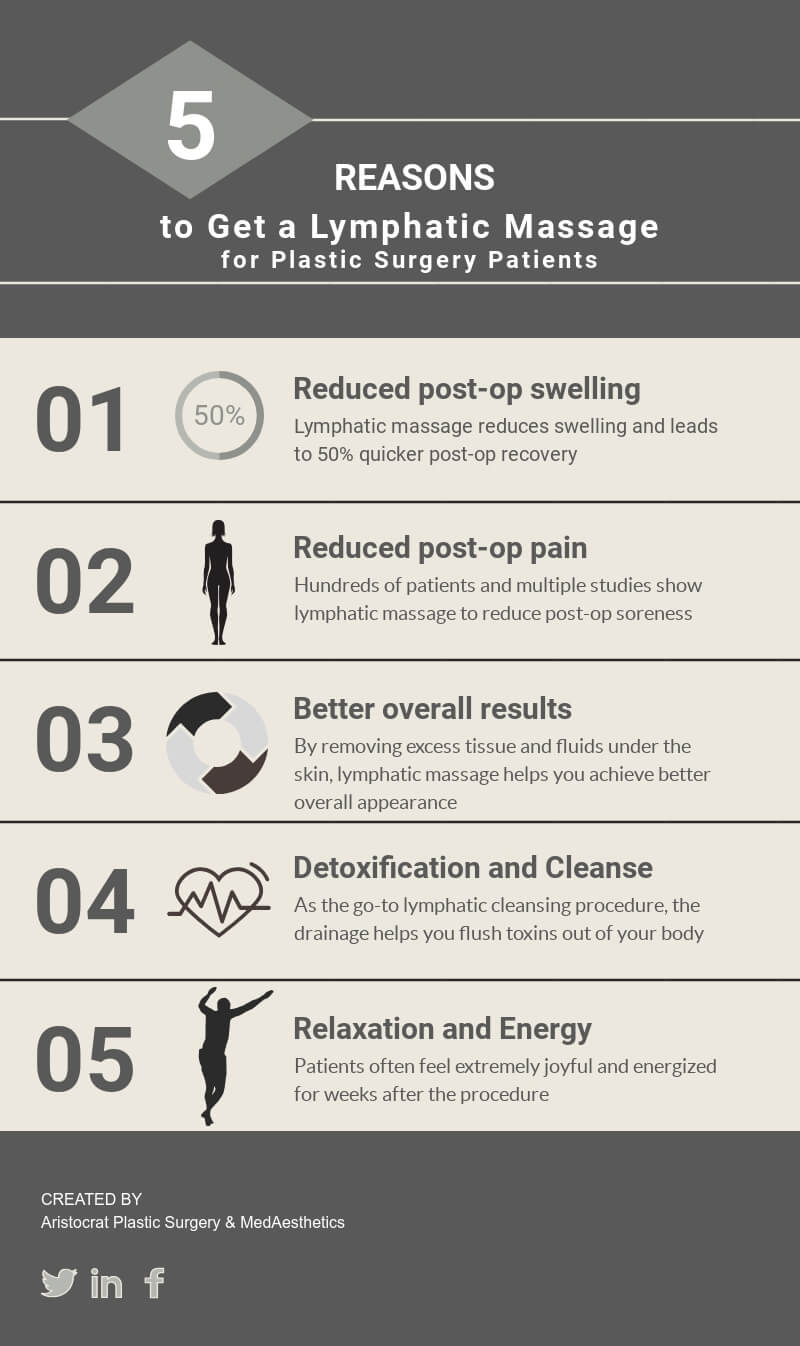
Lymphatic Massage Does Speed Up Recovery
Post-op recovery is not a fun process, whichever way you spin it. But it can be made quicker.
See, the big part of the recovery process is about waiting until the swelling goes away.
Whether it’s eyelid surgery or liposuction, some post-op swelling is always expected as part of the healing process.
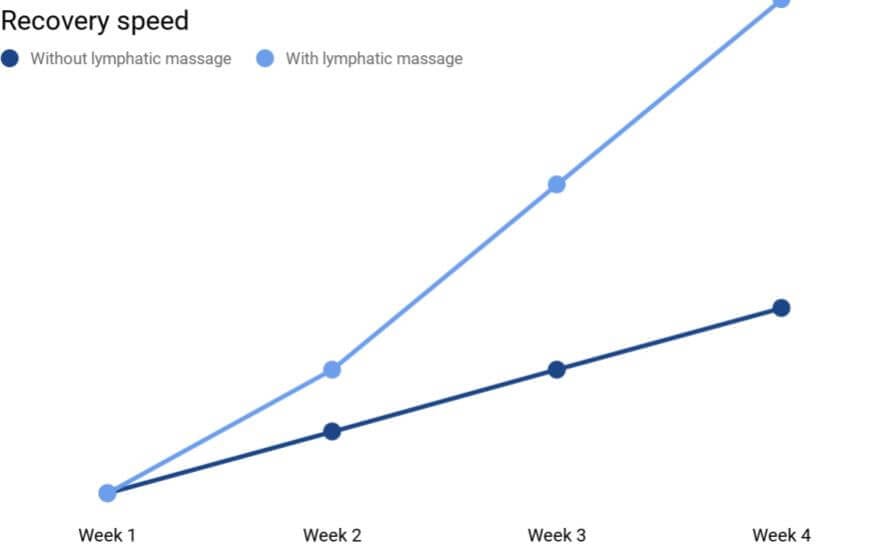
Lymphatic massage is the prime choice when it comes to reducing swelling, as it removes the fluid build-ups lying under your skin.
But that is not the only reason why you should be concerned.
These fluid build-ups, if untreated, eventually can cause your skin to harden, and for swelling and bruising to happen.
Otherwise known as fibrosis, it is considered one of the main complications after plastic surgery.
While it is definitely not a very common side effect, nor a particularly dangerous one, it can be unpleasant and very unaesthetic, causing pain and visible scars near the surgical site.
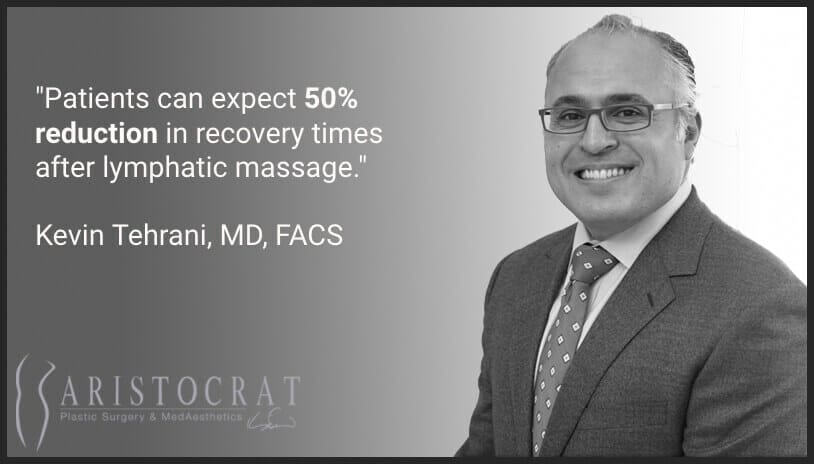
Since it unblocks your lymphatic system, lymphatic massage can help you kill two birds with one stone:
- Speed up your recovery by detoxicating your body and reducing swelling
- Avoid very unpleasant and unappealing complications by removing fluid buildups
In Dr. Tehrani’s experience, lymphatic massage is extremely helpful after:
- Liposuction
- BBL procedures
- Tummy tuck
- Facelift and necklift
- Rhinoplasty
- Breast augmentation and reduction
In Dr. Tehrani’s experience, “patients can expect 50% reduction in recovery [times] utilizing lymphatic massage […] in the early postoperative period.”
Lymphatic Massage Reduces Pain and Swelling, Too
The big question you’re probably having is: what happens after lymphatic drainage? What should you expect after the procedure?
The effects of lymphatic massage on post-operative recovery are well-researched both by practitioners and academics.
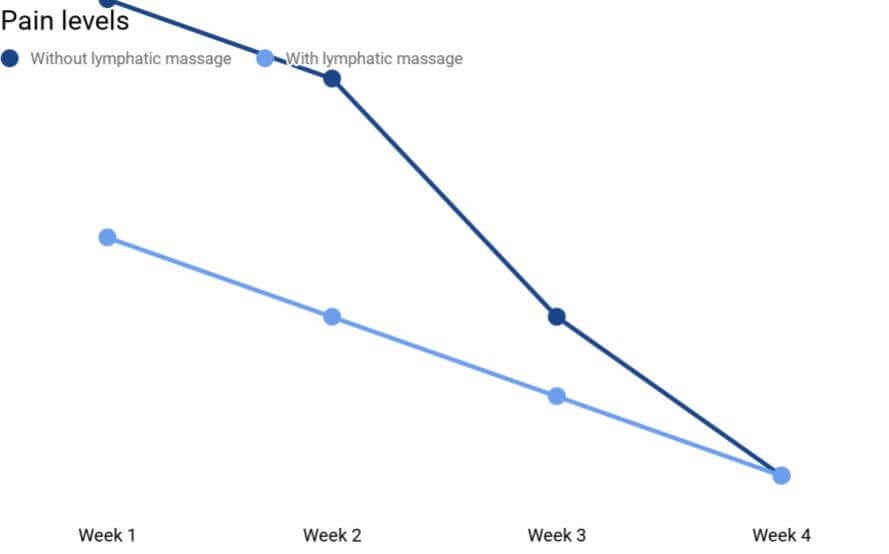
Multiple studies have shown that lymphatic massage speeds up the recovery process after plastic surgery procedures.
This particular study, published in 2014 in the Indian Journal of Plastic Surgery, examined the effects of lymphatic massage on 18 post-operative plastic surgery patients.
Here is what they found:
- More than half of the patients had fibrosis reduced completely after the procedure
- It reduced post-op pain almost completely for all patients
- Lymphatic massage has reduced swelling significantly for all patients
Another study has found the effects of manual lymphatic drainage even more eye-opening.
The researchers—Patricia Depoli, MD of Saint Francis Hospital and Laurie A. Casas, MD, FACS, an Assistant Professor of Surgery at the Northwestern University Medical School Glenbrook Hospital—have studied post-op recovery of patients in 13 plastic surgery areas, and have come to the following conclusions:
- Without the procedure, it takes 9-18 months for post-operative swelling and fibrosis to go away completely
- With MLD (manual lymphatic drainage—massage), it takes 3 weeks to 6 months on average for patients to eliminate any swelling and fibrosis completely
So, to answer the question of how important lymphatic massage is after your surgery: sure, the swelling will go away eventually, as will the soreness.
But why not speed up the whole process considerably and save yourself from potential complications by attending a few 50-minute sessions?
Why Am I Just Hearing about This Now?
The procedure isn’t exactly new.
It was two curious pioneers from France, Dr. Emil Vodder and his wife, Dr. Estrid Vodder, who took it upon themselves to find a way to tackle the problems of our lymphatic system in 1930s, at a time when the subject was poorly understood.

Their main goal was, of course, not to find the next ‘hot’ detox procedure—or to help plastic surgery patients. They were exploring how they could help patients with swollen lymphs—a common symptom for several cancerous diseases.
However, what they came up with turned out to be much more universal.
Almost a hundred years has passed, and the medical community has recognized the many benefits of lymphatic drainage. Today, thousands of physicians and aestheticians are licenced in MLD (manual lymphatic drainage) procedures, helping patients flush out their lymphatic system of toxins and excess tissue.
What Patients Say About Lymphatic Massage
Manual lymphatic drainage is still a somewhat undiscovered gem in the world of plastic surgery. Also, most of our patients do not leave reviews for the massage specifically—they talk about their entire experience with Aristocrat Plastic Surgery.
Nevertheless, people all over the world happily share their impressions after lymphatic drainage sessions.
In an open letter by Christina E., the patient says she experienced excessive swelling and skin hardening in the abdomen area after her surgical procedure in 2016.
After the very first manual lymphatic drainage session, Christina saw significant improvement in the definition of her abdomen muscles—a sign that the lymph fluids have been removed.
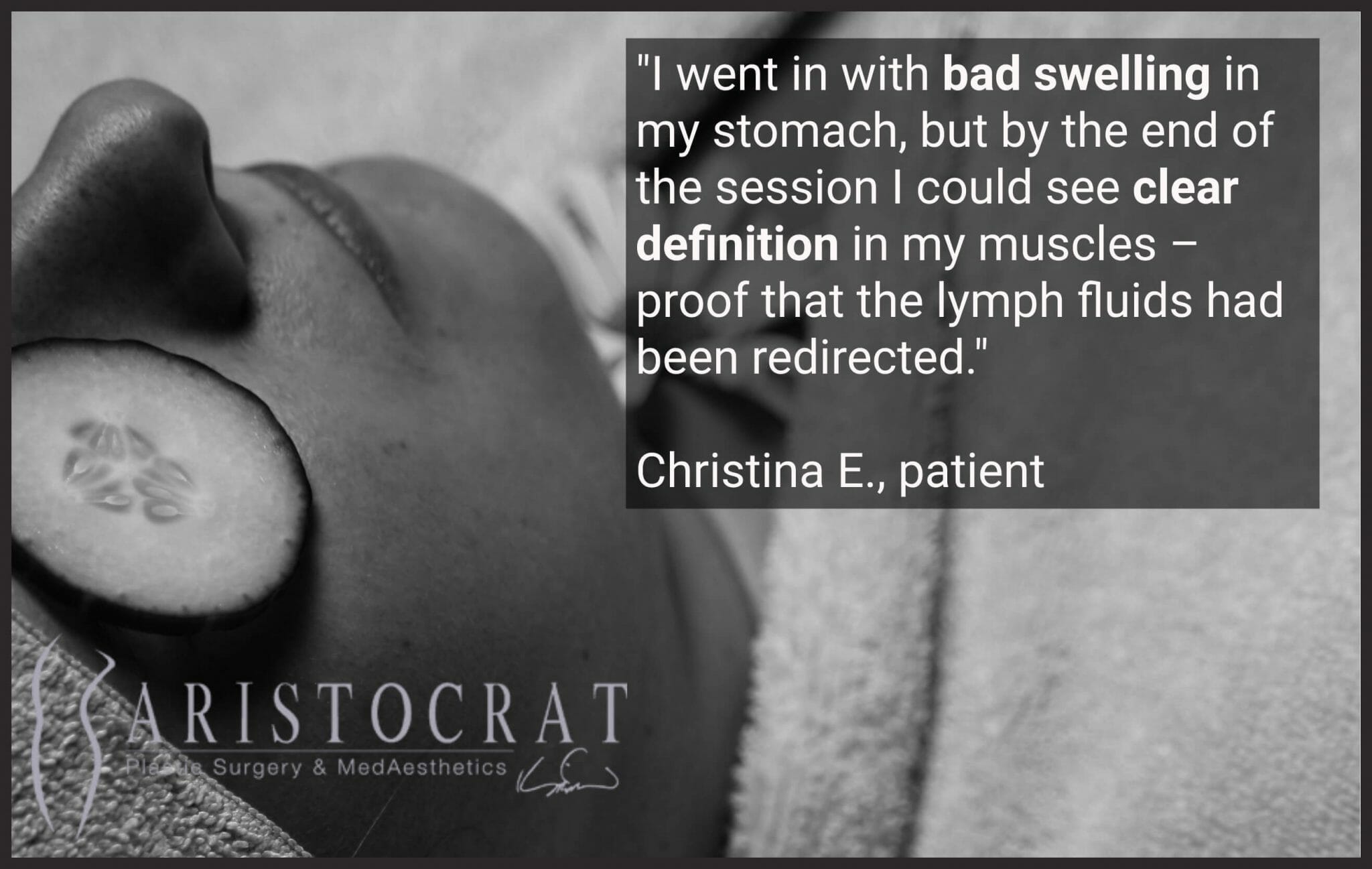
Christina’s story is far from unique.
Ivy Larson, a trusted voice in the specialized diets community, has turned to lymphatic massage as a solution to swollen eyelids she and her husband were suffering from.
While the swelling the couple experienced was related to an infection, it reacts very similarly to the swelling caused by a surgical incision.
In her experience, the results were almost instant. They had been invited to a friend’s house for dinner that night, and “there was no way” she would’ve gone with the swelling. The dinner had been set a couple of hours after her massage appointment.
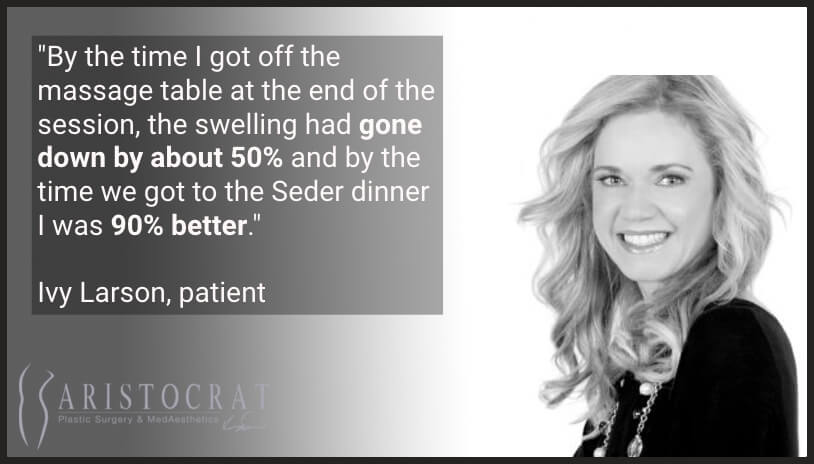
Ivy also shared feeling “unusually relaxed” and “incredibly rejuvenated” after the procedure.
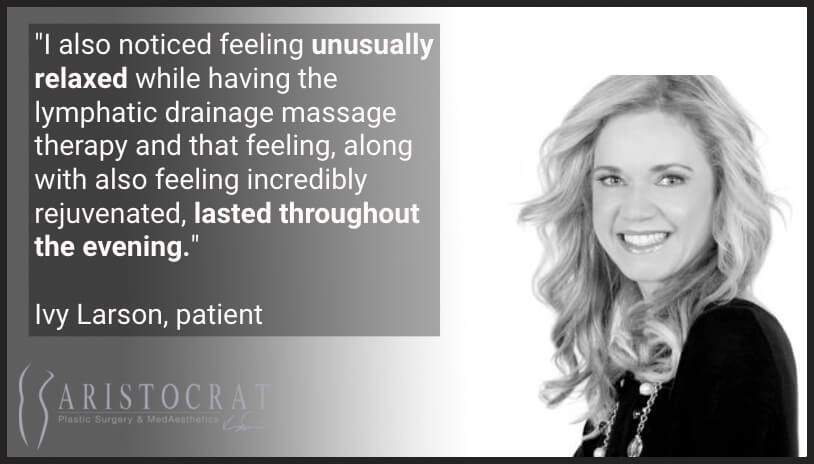
Most of them feel extremely rejuvenated, not to mention that the swelling usually reduces significantly after the very first session.
To hear more patient testimonials, Dr. Tehrani’s insights and other things you might want to know before your first lymphatic drainage procedure, read on. You’ll learn what it is exactly lymphatic massage can help you (and how it can’t), as well as how you should prepare for your first session.
What Patients Say About Dr. Tehrani
Speaking of testimonials, you might be interested in hearing what some of our wonderful patients have to say about Dr. Tehrani and his practice:
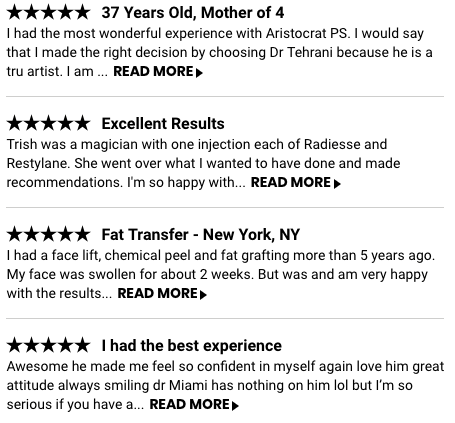
Here are a few more anonymous testimonials from Dr. Tehrani’s patients:
- “Dr. Tehrani and his staff are the […] warmest and professional medical team I have had the pleasure of knowing. Each visit I am happily greeted as I walk in. My procedures are thoroughly explained to me prior and my end result is always amazing! I couldn’t be […] happier with this fabulous office!”
- “I have been to the office on several occasions. It’s refreshing to know that I have never had to wait longer than just a few minutes to be seen. Dr. Tehrani and his team are excellent in doing what they do. My questions/emails have always been answered promptly. I would highly recommend to anyone considering plastic surgery or injectables.”
- “Everyone is very friendly, helpful, informative. I love my nurse Joanna she is very caring and patient with answering all my questions and addressing all my concerns! Everyone makes me feel very comfortable.“
What Lymphatic Massage Can Do, and What It Cannot
Unlike some plastic surgery procedures—which you have to qualify for—a lymphatic massage is a good idea for anyone and everyone.
However, some people may have unrealistic expectations about what the procedure can do for them.
Namely, there are a couple of myths we run into often here at Aristocrat Plastic Surgery:
Myth #1: Lymphatic Drainage Can Help You Lose Weight
Even though the name of the procedure may suggest something to be “drained” from your body, in reality it is just a very methodical, non-invasive massage that “shunts” the tissue remains and fluid build-ups from the lymphatic system beneath your skin out of your body.
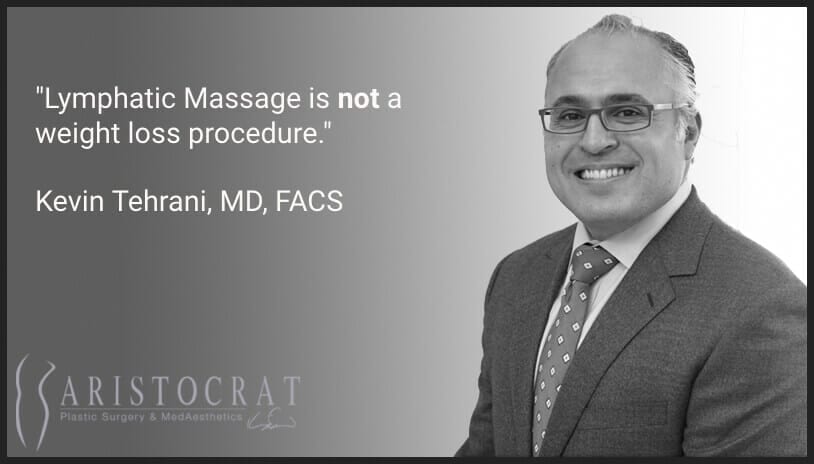
At that point, your body can easily direct the bad stuff towards the “exit points” in form of sweat and urine.
Patients do feel extremely refreshed and lively after the procedure, which often prompts them to lead healthier diets and exercise more. Which, in turn, results in weight loss and overall health improvement.
Lymphatic massage is also known for its many positive effects on the muscular system, such as improving blood circulation, increased flexibility and better posture, all of which can encourage patients to exercise more.
However, to say that lymphatic massage reduces weight on its own is wrong.
Myth #2: Lymphatic Massage Spreads the Bad Stuff All Over Your Body
Another big misconception is that once the physician starts “manipulating” the wasteful materials from your lymphatic system, they get scattered across your entire body.
While it is partially true, it’s the only non-invasive way to remove the fluid and tissue build-ups from your lymphatic system.
It may provide some temporary discomfort, especially if it’s your first time having the massage.
However, once the unwanted tissue and fluids are onto the cardiovascular highway, it’s a matter of hours before they will be flushed out of your system.
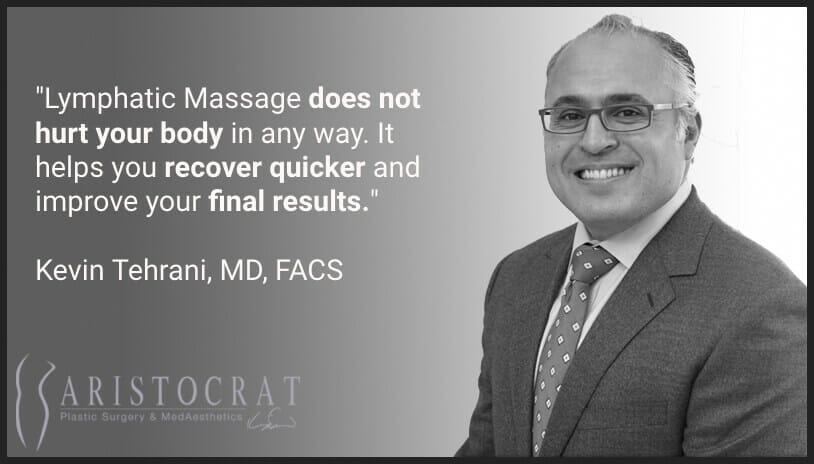
With this knowledge, it’s important to recap what a lymphatic massage can do for you:
- It can help you feel fresh and relaxed by flushing out the toxins out of your lymphatic system
- It can speed up your post-surgical recovery by reducing swelling and pain significantly
- It will help prevent some of the most common post-op complications
Are There Any Dangers to Lymphatic Massage?
While manual lymphatic drainage is a quick and harmless procedure, you might not want to set your date right after it.
The reason is simple: if it’s your first lymphatic massage ever, you may not feel so ‘hot’ afterwards. You may feel the urge to use the bathroom. It’s the temporary side effect of your internal systems trying to flush out the bad stuff.
Will it be worth it? Absolutely. All of our patients feel like they’ve been reborn after their first procedures.
It is important to note that patients who don’t take very good care of themselves (smoking, unhealthy diets) will feel a particularly large improvement after drainage; however, it is them who usually feel the most foul a few hours after the procedure.
Just to avoid any inconveniences at work and personal life, we recommend not planning anything for at least 24 hours after your first lymphatic massage, and leave that time to rest and cleanse.
How to Prepare for Your First Lymphatic Massage
By definition, manual lymphatic drainage does not require any special preparation on the patient’s part.
(Unless you’re determined to perform the massage yourself, which is a different story entirely.)
However, there are a few things you can do to get the most out of your experience:
1. Consult with your surgeon/physician
If there is one thing you want to do before making up your mind about any procedure, it is to talk to your surgeon beforehand.
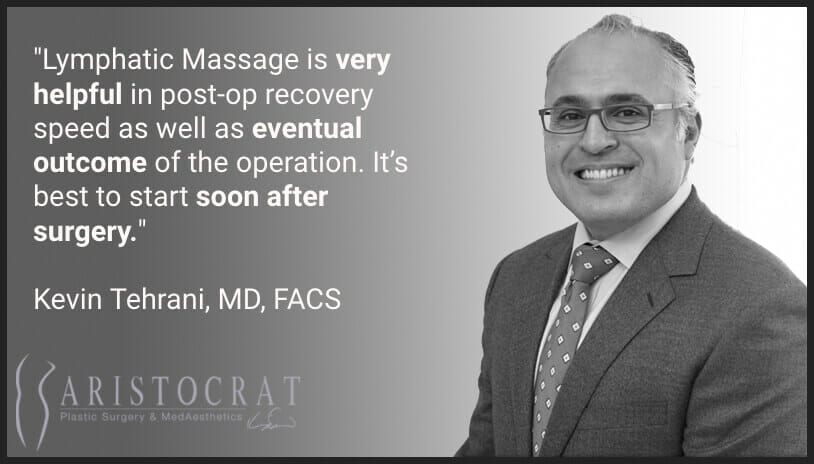
Not only your surgeon will provide you with detailed nutritional guidelines—such as which supplements to take to maximize the ‘cleansing’ effect—they will also tell you when exactly is the best time to get the massage to maximize your plastic surgery results.
For example, depending on your individual case and the scope and type of procedure you went through, your surgeon may suggest to start your lymphatic massage course a couple of weeks after the procedure, following a custom-tailored session plan.
Usually, at least two procedures are booked in advance for optimal results.
2. Stay well-hydrated
While this is a general guideline—and is emphasized throughout your entire plastic surgery journey—it’s particularly important before laying down on the masseur’s table.
The whole point of manual lymphatic drainage is to flush the fluid and tissue remains from your lymphatic system. The entire process can become very unpleasant if you don’t have the fluids to do so.
Here are a few indications of a well-hydrated body:
- Light color urine. If your urine is transparent or of light color, it is a strong sign your body is well-hydrated. Dark yellow or gold urine can be an indication of poor hydration.
- Constant sweat production. Normal, consistent sweat patterns are a good indication of a well-hydrated body. Beware if you’re having a hard time sweating during physical exercise.
- Inelastic skin. Good hydration leads to elastic skin, which rebounds quickly after being pinched or stretched. If your skin is slow to rebound, it may be a sign of dehydration.
3. Clean, minimalistic diet a couple of days before
Many detoxification diets are available on the market, and your surgeon will suggest what is best for you.
The diets are short term, and are aimed to prompt natural detoxification processes in your body.
The meal plans range from outright 24-hour water fasts to simplified fruit-and-vegetable diets based on the patient’s preferences and capabilities.
These diets are not necessary before lymphatic massage, but they can definitely help you maximize the results. Just make sure to consult both your surgeon and your dietician before locking in on a particular diet.
4. Wear loose, comfortable clothes
If you prefer to keep your clothes on during the procedure (instead of the physician working through the sheet), make sure it is comfortable and can be partially removed easily.
Comfortable, loose sweatpants and jumpers are best.
When Is Lymphatic Massage Most Effective?
Due to its versatile nature, a lymphatic massage can help most anyone, at any stage of your plastic surgery recovery.
In the context of surgical procedures, we rarely perform full-body lymphatic drainage massages. Instead, we focus on specific treatment areas to make sure your body heals quickly and uneventfully.
For example, for procedures around the facial and neck area (rhinoplasty, neck lift, eyelid surgery), a facial lymphatic drainage technique will be performed.
Likewise, tummy tuck and BBL procedures will require a lymphatic massage around your abdomen, hips and thigh area.
As for the timing, there is no universal rule for lymphatic massage.
Depending on the specifics of your procedure (duration, scope, treatment area, medical information, immediate results, level of post-operative swelling), Dr. Tehrani will prescribe you an individual regimen that may involve several procedures over the course of a few weeks or even months.
Some patients may expect to have a lymphatic drainage right after surgery, while for others it can be best to wait a week or two.
What Is the Procedure Really Like?
All manual lymphatic drainage sessions last from 30 minutes to 1 hour.
You, the patient, will lie on the table, while your physician will perform the massage with their hands.
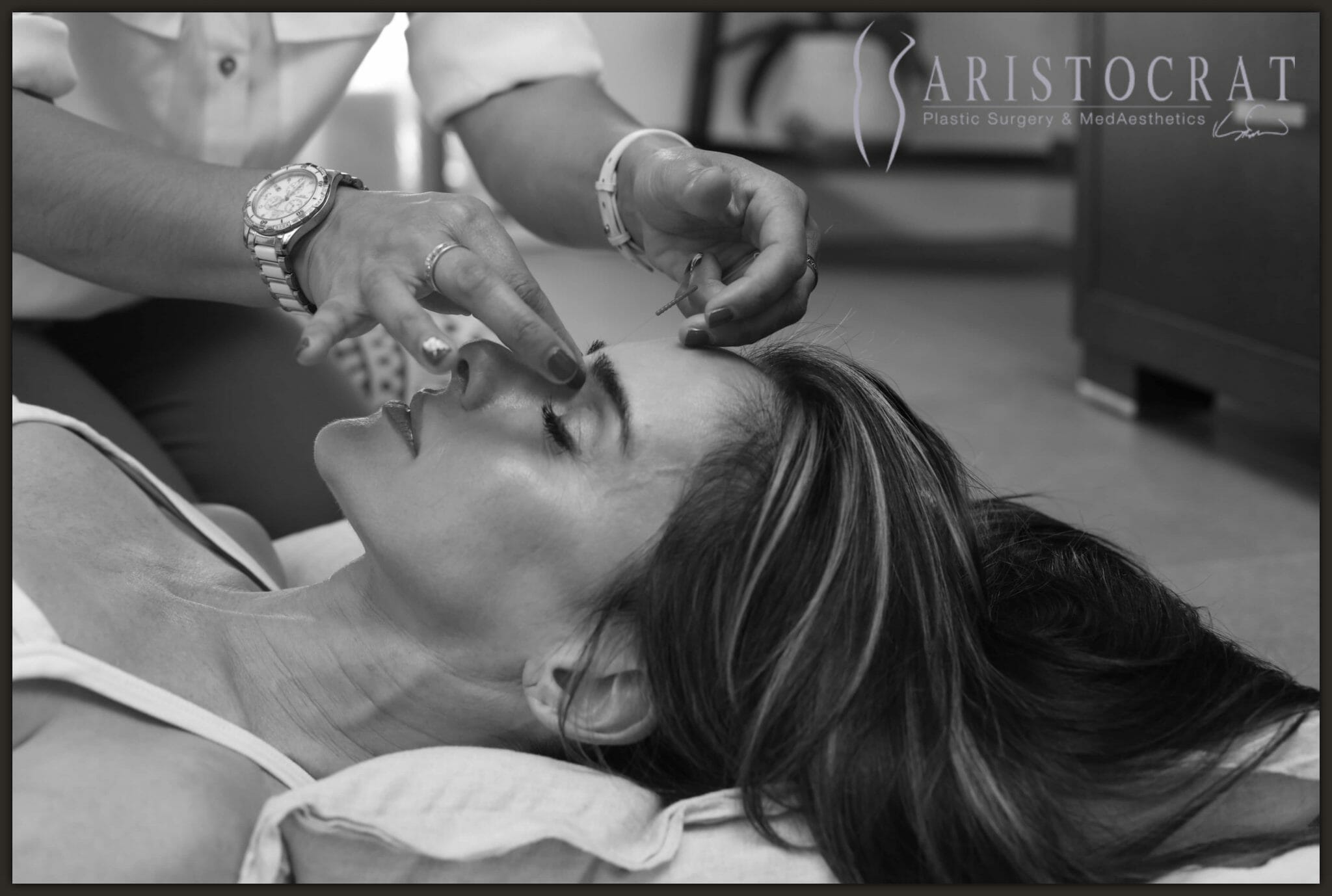
Only moderate pressure will be applied to the surface of your skin, so it is highly unlikely you will feel any pain or discomfort. It is not your regular massage, where the masseur might use significant force.
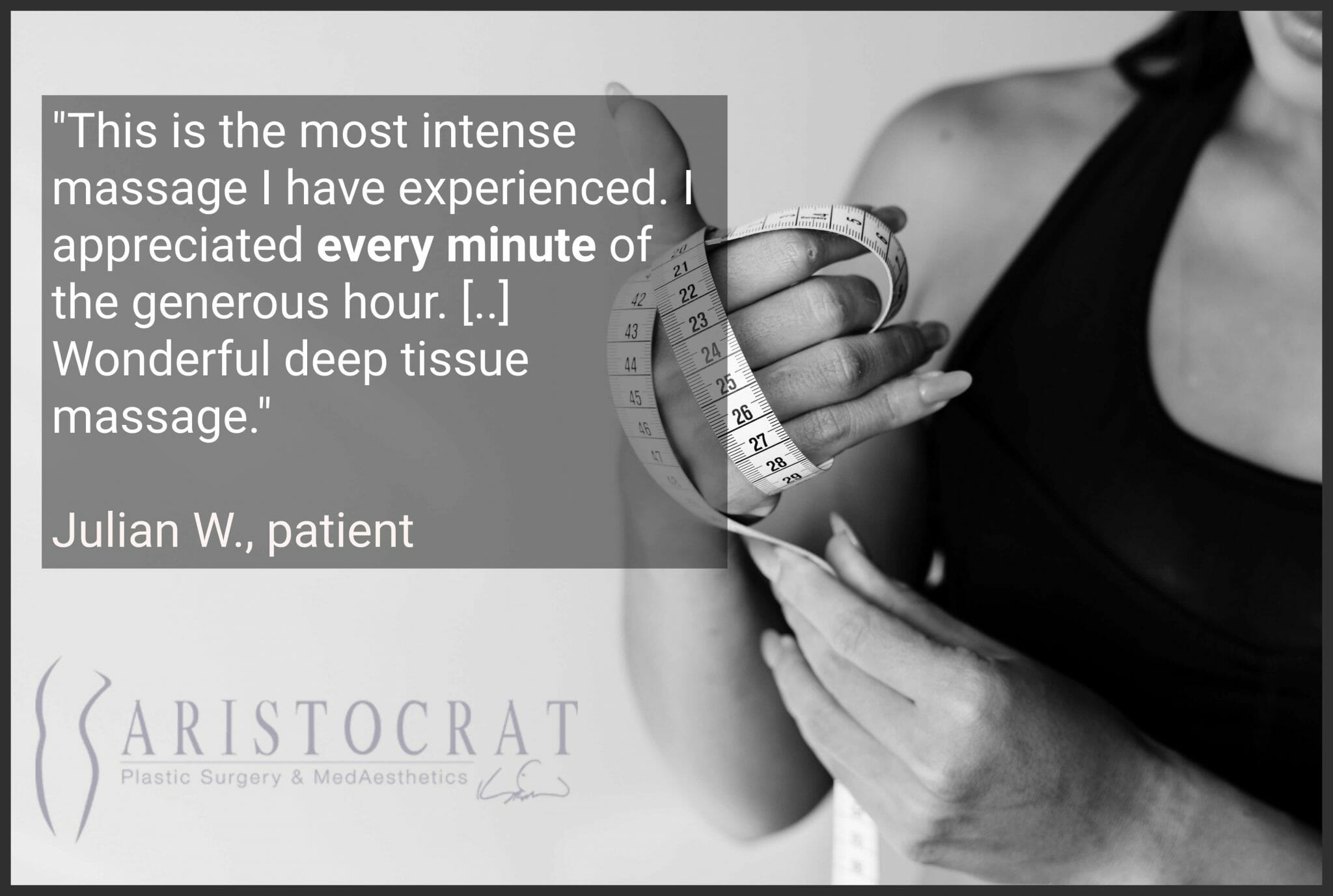
During the procedure, you may feel like the fluids are moving beneath your skin. This will mean that the massage is working, and the fluid build-ups are being navigated out of your system.
However, during this process, you may feel a temporary coldness or numbness in your limbs. Tingling sensations and gurgling noises are also to be expected.
While lymphatic drainage can be performed on any part of your body (face, abdomen, legs), the priority will be the areas near the surgical incision site.
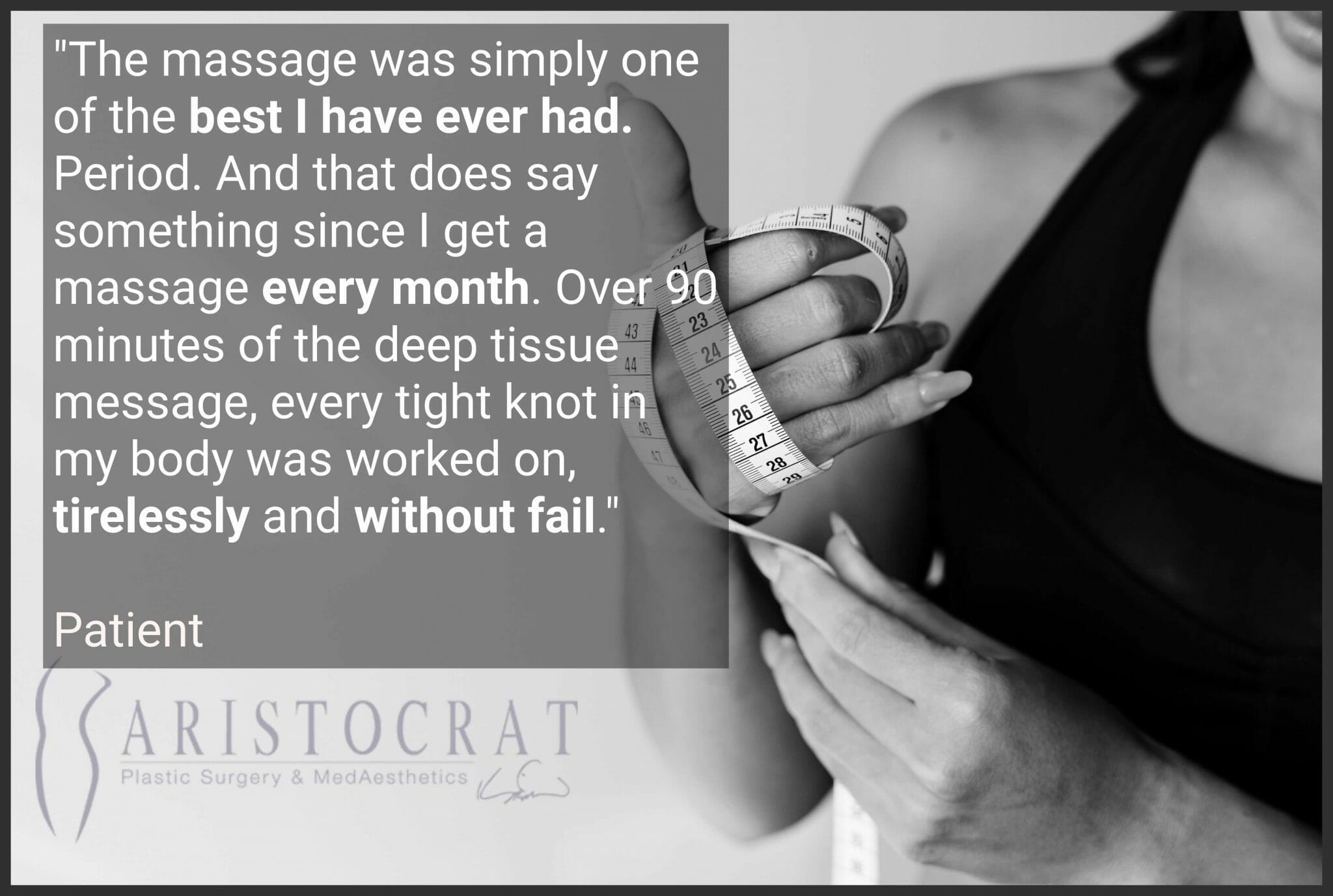
For example, tummy tuck patients will benefit most from the abdomen-area lymphatic drainage. You can see how the procedure goes in this video:
Is It Possible to Do Lymphatic Massage at Home by Yourself?
At this point, you might be fairly certain that lymphatic massage is a good thing. Perhaps you even think it might be worth trying doing it at home, by yourself.
While, technically, it is possible, we do not recommend it.
Not because we don’t believe you can—because you might not feel the same effect afterwards. And, while it’s not a required procedure by any means, it does play an important role in any patient’s post-op recovery.
Performing a proper lymphatic drainage manually requires:
- Knowledge of the lymphatic system (knowing the key ‘clutter points’ and ‘exit pathways’)
- Understanding of the underlying post-op tissue and fluid build-ups (in order to remove them)
- Expertise with the massage itself (applying the right amount of pressure at the right places might simply be impossible without a physician’s help)
So, again, just to be clear: we do not think that you’re not capable of performing a lymphatic massage.
But since it does require knowledge and expertise, it is difficult to perform all of the steps optimally, which can ruin the entire outcome. It is effective for facial, abdomen, thigh and other post-op treatment areas.
We do mean it when we say that manual lymphatic drainage is extremely important in post-op recovery, and the best thing you can do is to leave it to people who do it for a living.
Besides, it can get really boring doing this by yourself.
NOTE: If you must try this on your own, check out this guide.
Final Verdict: Everyone Should Get a Lymphatic Massage, Even If You’re Not a Plastic Surgery Patient
Manual lymphatic drainage is an extremely relaxing, cleansing procedure that helps prevent some of the more common plastic surgery side-effects, such as swelling and bruising.
The procedure is a simple massage that does not expose patient to any danger.
While most anyone will benefit from the procedure, plastic surgery patients are especially encouraged to consider lymphatic massage, as it will reduce pain and swelling and make the post-op recovery quicker.
In most cases, the drainage even improves the final plastic surgery result.

